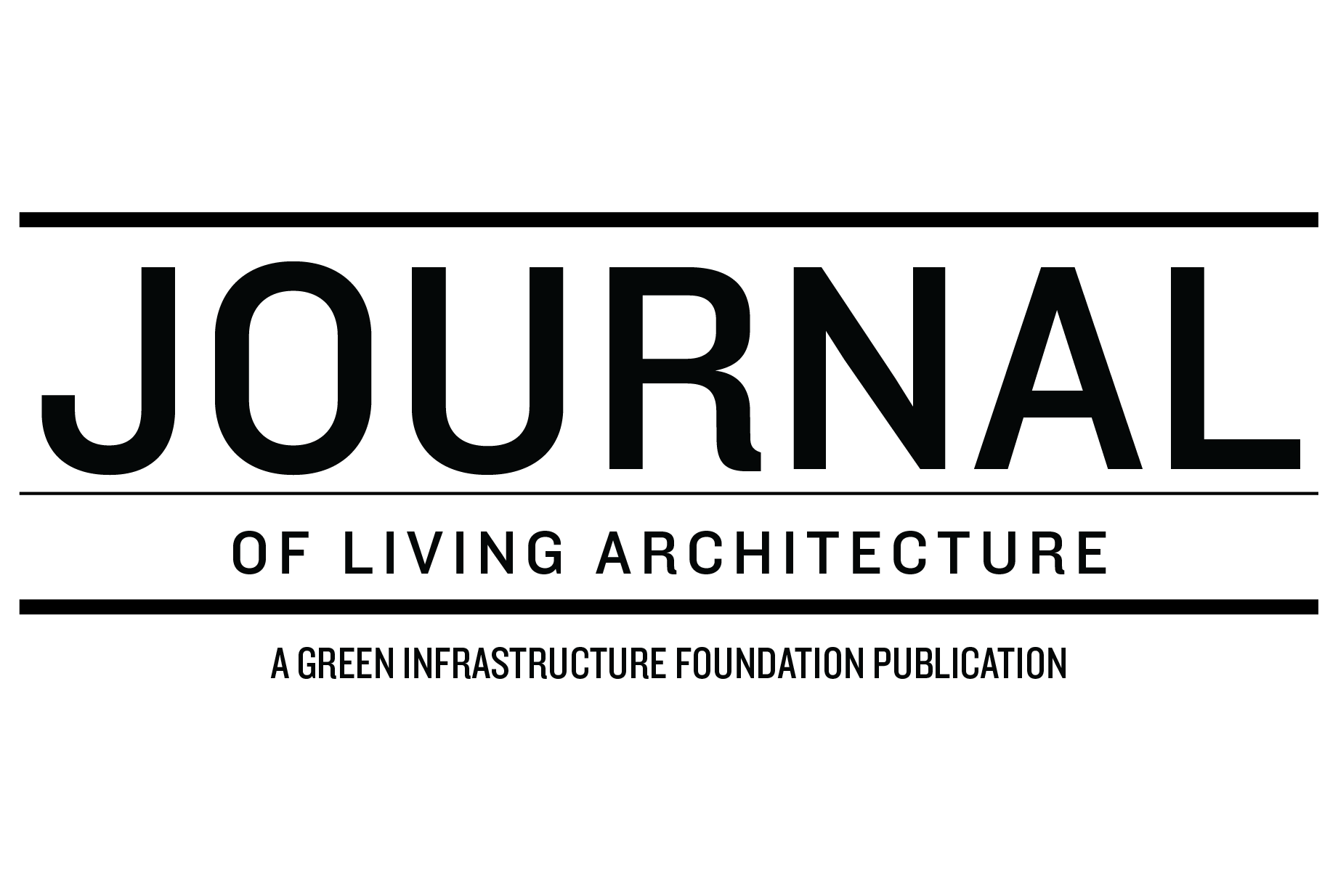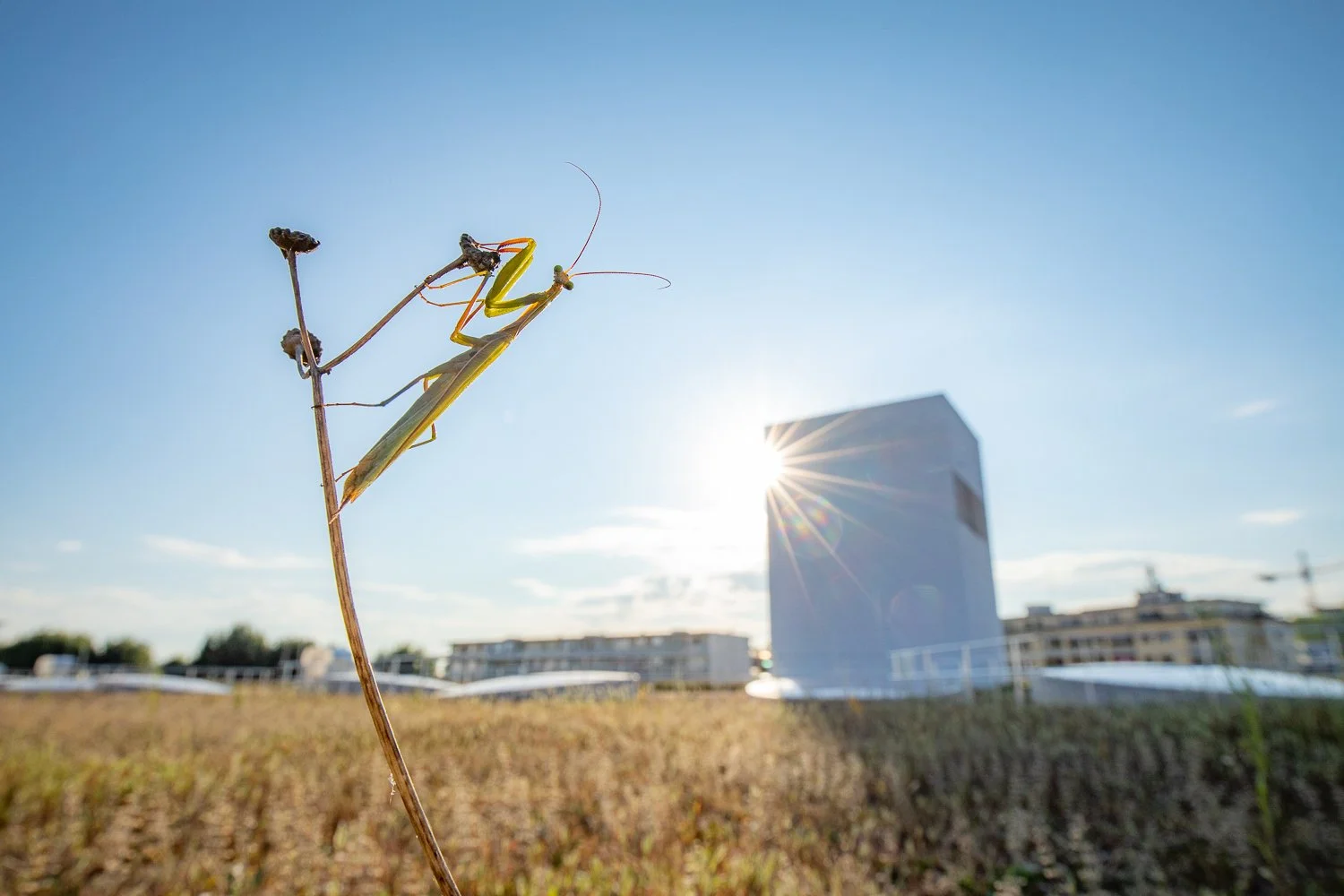Articles
Exploring Fruiting Crops in Rooftop Agrivoltaics in a Changing World
This article explores the potential of growing fruiting crops beneath solar panels on green roofs, examining opportunities, challenges, and the role this innovative system could play in resilient urban food and energy systems.
Preliminary Assessment of Saffron Production in Different Growing Systems in Kentucky, USA
This research explores saffron’s potential as a high-value, sustainable crop for Kentucky by comparing multiple growing systems and biofungicide treatments. By examining how different environments influence yield and plant health, the study offers new insights into optimizing saffron production and expanding its viability in regional agriculture.
Land Cover Classification and Change in Porto, Portugal: Spatial Analysis for Urban Vegetation and Green Roof Adoption
We analyzed landcover change in Porto, Portugal, using satellite imagery from 2017 and 2022. K-Nearest Neighbor classification revealed increases in impervious surfaces and decreases in vegetation, highlighting opportunities for green roof interventions and the importance of climate justice considerations.
A Rooftop Agrivoltaic System: Pollinator Plant Establishment
Green roofs and photovoltaic arrays can coexist, enhancing biodiversity and solar energy generation. In a simulated study, pollinator plants thrived better under PV arrays due to favorable microclimate conditions, suggesting benefits for urban habitat diversity and plant establishment.
Native Forbs Grown Under Green Roof Conditions Have Altered Biomass Allocation Strategies
Green roofs can sequester carbon dioxide, but their contribution is often overlooked. Plants on green roofs allocate more biomass below ground to cope with stress and benefit from symbiotic fungi. This suggests green roofs significantly aid in carbon sequestration.
Investigating the Climate Mitigation Performance of a Green Roof System in the Flint Hills Ecoregion, USA
This paper evaluates carbon sequestration on green roofs. Results suggest shallower beds with native grasses may offset deeper beds, aiding climate mitigation with proper irrigation.
Incorporation of Green Infrastructure on Road Tunnel Ventilation Stacks: Potential Ambient Air Quality Improvement
This study aims to describe the integration of green wall technologies and a tunnel ventilation facility, and models the potential ambient air quality improvement the green wall plants have through PM2.5 dry deposition.
Cooling Effects of a Modular Living Wall System in a Humid Subtropical Climate
This study repurposes automotive sheet metal into 300 modular living wall system (MLWS) planters, observing the cooling effects of 25 plant species on southeast-facing MLWS during summer. Results show Coreopsis lanceolata 'Sterntaler' achieving a 3.4 °C cooler ambient air temperature, highlighting MLWS's notable cooling effects in humid subtropical climates.
Autumn Production of Romaine Lettuce on an Extensive Green Roof
Discover how lettuce cultivation thrived on a shallow substrate, overcoming temperature extremes and low fertility. Learn about the impact of fertilizers and weather conditions on crop productivity.
Extensive Green Roof Study on a Retrofit Building in Berlin, Germany: Report After 34 Years of Monitoring
This report describes the continued observation of the plant development on a green roof on a retrofit building in Berlin from 1986 to 2019. This project symbolizes a shift in the urban planning paradigm in post-war Berlin away from demolishing blocks of the housing that survived World War II to gradual renovation of the remaining historic rented courtyard buildings.
A New Blue-Green Roof Solution: LiveRoof RoofBlue® RETAIN™
New research shows that LiveRoof’s innovative new Blue-Green Roof product, RoofBlue® RETAIN™ has the ability to reduce stormwater runoff, conserve irrigation water, and enhance plant growth.
Disentangling Dynamics of Green Roof Vegetation Analogue to Dry Grassland Over 3 Years: Plant and Substrate Response to Microenvironmental Variations
The abiotic conditions of the ExGR substrate are analogous to those of native dry grasslands (poor, shallow and highly drained soil), providing opportunities for diversifying ExGR with native flora. This study characterized vegetation and substrate dynamics of a sown native dry grassland community on a 254 m² ExGR in relation to microenvironmental conditions.
On the Roof With The Father of Green Roof Biodiversity Research
Dr. Stephan Brenneisen, the father of green roof and biodiversity research discusses how to design green roofs for biodiversity, green roof policy in Basel Switzerland and his future plans.
Exploring The Potential of Rooftop Agrivoltaics
Rooftop agrivoltaics are cutting edge technologies that consist of the integration of rooftop farming with solar photovoltaics. With an estimated 1.2 million acres of rooftops in the US suitable for solar panels, discover the latest research on agrivoltaics.
Planting Living Roofs for Native Pollinators (Part I: Sedums)
Green roofs can recover space for pollinators in dense urban environments, where native ecosystems once persisted. This article is the first of several that will focus on the unique role of living roofs made for the preservation of native pollinators - looking at Sedums in particular.
Designing for Maximum Energy and Climate Benefits of Green Roofs
Green roofs and walls can provide a myriad of energy benefits, from moderating heat through the building envelope, to improving solar PV efficiency, to reducing the urban heat island, and more. A new report provides an exhaustive summary and literature review of these benefits and how designers can maximize them on their projects.
Four Approaches to Making Living Roofs With Native Plants
There is a great potential for and an essential role for making green roofs with native plants. If conservation practices are not taking place at the ground level, or if the native plant communities have already been significantly altered, then living roofs may provide a last chance to support the ecological heritage of the region. This article explores four approaches to make living roofs with native plants.
Container gardens: Possibilities and challenges for environmental and social benefits in cities
Journal of Living Architecture, Volume 8 Number 2 Pages 1-19
Designing and Planting Climate Resilient Green Roofs
Through the use of tactics and strategies found in nature, green roofs can be designed to adapt to the inevitable cycles and stresses that climate can impose. This overview of ecosystem approaches shows how green roofs can be planted and designed for resilience, especially in hot, arid climates.
The Value of Rigorous Science for Green Infrastructure
The green infrastructure industry has an incredible responsibility to provide the best possible green solutions for the 66 percent of the world’s population that will live in urban areas by 2050. We can only get there through excellent research and rigorous science, as well as close collaborations with civil engineers.










